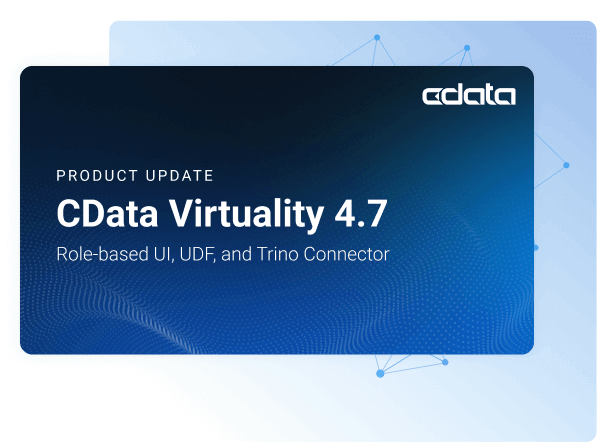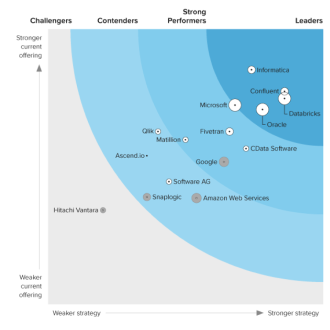Discover how a bimodal integration strategy can address the major data management challenges facing your organization today.
Get the Report →Replicate HCL Domino Data to Multiple Databases
Replicate HCL Domino data to disparate databases with a single configuration.
Always-on applications rely on automatic failover capabilities and real-time access to data. CData Sync for HCL Domino integrates live HCL Domino data into your mirrored databases, always-on cloud databases, and other databases such as your reporting server: Automatically synchronize with remote HCL Domino data from Windows or any machine running Java.
You can use Sync's command-line interface (CLI) to easily control almost all aspects of the replication. You can use the CLI to replicate HCL Domino data to one or many databases without any need to change your configuration.
Connect to HCL Domino Data
You can save connection strings and other settings like email notifications in XML configuration files.
The following example shows how to replicate to SQLite.
Windows
<?xml version="1.0" encoding="UTF-8" ?>
<CDataSync><DatabaseType>SQLite</DatabaseType>
<DatabaseProvider>System.Data.SQLite</DatabaseProvider>
<ConnectionString>Server=https://domino.corp.com;Database=names.nsf;Port=3002;SSLClientCertType=PEMKEY_FILE;SSLClientCert=full_path_of_certificate.pem;SSLServerCert=*</ConnectionString>
<ReplicateAll>False</ReplicateAll>
<NotificationUserName></NotificationUserName>
<DatabaseConnectionString>Data Source=C:\my.db</DatabaseConnectionString>
<TaskSchedulerStartTime>09:51</TaskSchedulerStartTime>
<TaskSchedulerInterval>Never</TaskSchedulerInterval>
</CDataSync>
Java
<?xml version="1.0" encoding="UTF-8" ?>
<CDataSync><DatabaseType>SQLite</DatabaseType><DatabaseProvider>org.sqlite.JDBC</DatabaseProvider>
<ConnectionString>Server=https://domino.corp.com;Database=names.nsf;Port=3002;SSLClientCertType=PEMKEY_FILE;SSLClientCert=full_path_of_certificate.pem;SSLServerCert=*</ConnectionString>
<ReplicateAll>False</ReplicateAll>
<NotificationUserName></NotificationUserName>
<DatabaseConnectionString>Data Source=C:\my.db</DatabaseConnectionString>
</CDataSync>
Prerequisites
The connector requires the Proton component to be installed. Normally, Proton is distributed as part of the AppDev pack. See the HCL documentation for instructions on acquiring and installing Proton or the AppDev pack.
Once the Proton service is installed and running, you will also need to create a user account and download its Internet certificate. This certificate can be used to set the connector certificate connection properties.
Authenticating to Domino
- Server: The name or IP address of the server running Domino with the Proton service.
- Port: The port number that the Proton service is listening on.
- Database: The name of the database file, including the .nsf extension.
- SSLClientCertType: This must match the format of the certificate file. Typically this will be either PEMKEY_FILE for .pem certificates or PFXFILE for .pfx certificates.
- SSLClientCert: The path to the certificate file.
- SSLServerCert: This can be set to (*) if you trust the server. This is usually the case, but if you want to perform SSL validation, you may provide a certificate or thumbprint instead. See the documentation for SSLServerCert for details.
Additional Server Configuration
The connector supports querying Domino views if any are defined. Before views can be queried by the connector they must be registered with the design catalog.
Please refer to the Catalog Administration section of the AppDev pack documentation for details on how to do this.
Configure Replication Queries
Sync enables you to control replication with standard SQL. The REPLICATE statement is a high-level command that caches and maintains a table in your database. You can define any SELECT query supported by the HCL Domino API. The statement below caches and incrementally updates a table of HCL Domino data:
REPLICATE ByName;
You can specify a file containing the replication queries. This enables you to use the same replication queries to replicate to several databases.
Run Sync
After you have configured the connection strings and replication queries, you can run Sync with the following command-line options:
Windows
DominoSync.exe -g MySQLiteConfig.xml -f DominoSync.sql
Java
java -Xbootclasspath/p:c:\sqlitejdbc.jar -jar DominoSync.jar -g MySQLiteConfig.xml -f DominoSync.sql







